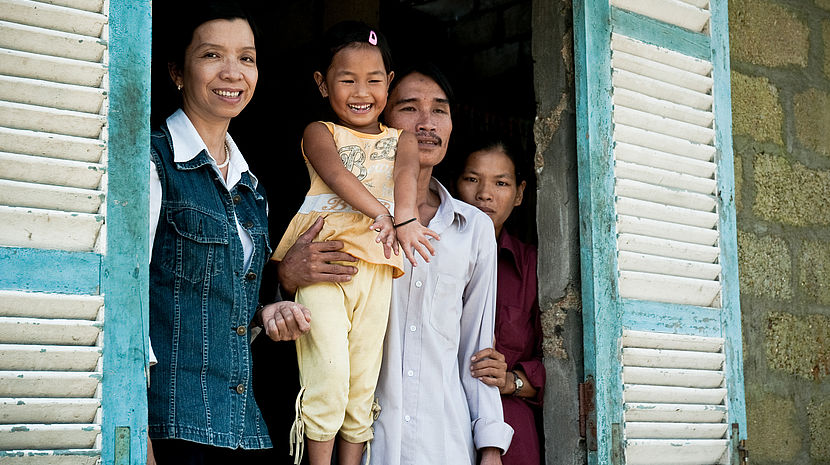World Mental Health Day 2018

31 year old Hein Huynh from Vietnam lost his sight in an accident on a construction site in January 2004. After suffering depression, alcoholism and attempting suicide Hein now runs his own farm and helps support his wife and daughter.
CBM
The theme for this year’s World Mental Health Day, observed on 10 October, is "Young people and mental health in a changing world". In this article, Dr.Carmen Valle (CBM mental health technical advisor) talks about breaking the cycle of stigma and mental illness for a healthier youth.
Action in youth mental health is essential if we are to significantly reduce the prevalence of mental illness in the general population. Most psychological conditions manifest for the first time during adolescence and youth. Health and well-being starts shaping up concretely during the key periods of childhood, adolescence and early youth.
During childhood, negative experiences, either at home or outside of the home (for example, bullying in school) can have a lifelong impact on the development of core cognitive and emotional skills. Poor socioeconomic conditions, parents affected by mental illness, and other factors also have a significant effect on vulnerability to mental health disorders. substance abuse - either alcohol or drugs first appear during adolescence. Substance use is particularly harmful for adolescents as they are still developing both mentally and physically. Peer pressure and media influence also play prominent roles during adolescent years.
Suicide and self-harm
If we talk about mental health and youth, we must address as well the increasing risk of suicide and self-harm in recent years. Suicide among teens and young adults has nearly tripled since the 1940s. Whereas suicide is a leading cause of death across all age groups, the concerns around adolescence and youth are greater This is because the sharpest increase in the number of suicide deaths are found throughout early adolescence and young adulthood, and because suicide ranks higher as a cause of death during youth compared with other age groups - it is the second leading cause of death during childhood and adolescence.
But more importantly, death by suicide is preventable, with adolescence presenting a key prevention opportunity resulting in many more years of life potentially saved.
Stigma and mental health
The cycle between stigma and prevalence of severe mental illness is one that we must understand in order to actually manage this prevention: For as long as stigma is present, people will still fear mental illness and avoid openly discussing and seeking support, which will lead to early detection and therefore much less severe conditions. This, in turn, would reduce stigma, as the different conditions won’t appear as severe.
In this regard, it is precisely youth who is leading the transformation and opening lines of dialogue and action that we had not seen before.
In recent years, and through social media and other platforms, youth is claiming not only the normalization of mental health, but even more, embracing diversity and the de-stigmatization of all aspects related to mental health and well-being, including suicide.
For example, through this article on eight inspiring, young mental health activists, we get to know inspiring youth who are, through the creation of apps, the foundation of nonprofit organizations and the constitution of support networks, transforming attitudes and changing perceptions, while providing support to each other.
At the same time, influencing figures of arts, music and cinema are opening up and encouraging youth to speak up about mental health and well-being. All across the world, the youth is daring speaking up and transforming society, and this is also the case in the countries where CBM and partners are working in improving mental health.